8 min read
7 tips before buying electric underfloor heating
If you are in the market for an electric underfloor heating system for your next home renovation, then you have landed in the perfect place. We’ve...

With the colder months fast approaching, many homeowners will start to think about turning on their heating and some may even be getting new heating systems installed. With costs for heating homes still not where they were two to three years ago, we are all going to be a little bit more conscious of spend on heating when the time comes, especially with electric heating systems such as electric underfloor heating.
In this latest heating blog article, we’ll be guiding you through the best and most efficient way to run your electric underfloor heating system when those colder months land, so you can balance your comfort with cost. We’ll be answering questions such as:
This point is really for those of you who haven’t installed the electric underfloor heating system yet. Unfortunately, if you already have a system without insulation board installed, there is nothing you can do without taking up the floor and starting again.
Here at ThermoSphere HQ, you’ll find that our team will always recommend insulation boards with any underfloor heating project and for good reason. An installation where insulation board hasn’t been used will cost the homeowner more to run because it takes longer for the set temperature to be reached. Why? Because up to half of the heat generated by the underfloor system is lost through the subfloor. By installing insulation board, you’ll significantly reduce any heat loss and improve the overall efficiency of the system by up to 50%. 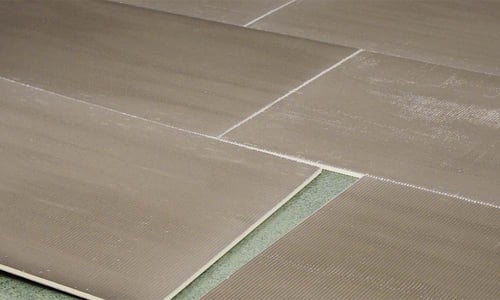
The temperature that you run your electric underfloor heating system is influenced by several factors such as how well insulated the space is and the floor finish installed above. For spaces that are well-insulated, a floor temperature of between 22oC and 24oC should be ideal. Any higher and you could risk overheating the space.
When it comes to the type of floor finish you are installing, each one will have a recommended maximum temperature that should not be exceeded when running underfloor heating. These ‘safe’ temperature recommendations are there to ensure that the floor finish does not suffer potential damage caused by the heat generated by the underfloor heating system. We’ve written a more detailed guide called ‘4 things that can affect electric underfloor heating output’ which runs through each type of floor finish in more detail. But to summarise, we recommend the following maximum floor temperatures:
Tile and stone floors: 29oC
Wooden, carpet and vinyl floors: 27oC
An important point to note is if you turn up the thermostat because you want to heat the room quickly, it will only result in the heating being on for longer but won’t necessarily heat the room any faster.
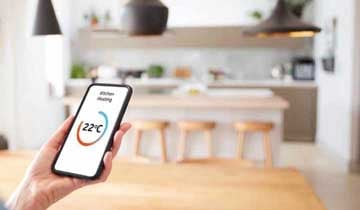
Air sensing is usually used when you are using the electric underfloor heating as a primary heat source. You’ll find that air sensors are built into the underfloor heating thermostat and because of this, there is a recommendation as to where the thermostat should be installed. To ensure accurate readings of the surrounding air, a thermostat should be installed five feet from the floor and away from direct sunlight, windows, and other heat sources.
Floor sensors are recommended because they help to protect the floor finish by accurately measuring the warmth of the floor and ensuring the maximum safe temperature is not exceeded. A floor sensor probe is installed during the installation process within the floor build-up, and we usually recommend installing a backup should any fault occur overtime to the primary one. Using the floor sensor is common when you are using the underfloor heating system as a secondary heat source or simply taking the chill off tiles in the winter months.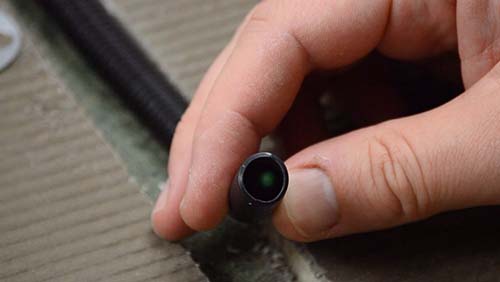
Using a setback temperature will make sure that the underfloor heating will not fall below the temperature you set when the heating is off. Not only is it a great way to protect the comfort of your home when the outside temperature plummets, it also helps with efficiency too.
Having a setback temperature doesn’t mean the heating is always on. If the setback temperature is the right one for your home, the heating will be off whilst you’re out but protected from dropping too far, especially if the weather turns very cold. The reason why using a setback temperature boosts heating efficiency is because it reduces the amount of work your heating must do to maintain a comfortable temperature during the scheduled ‘on’ times. For example, if your target temperature is 22oC when the heating is on and your setback temperature is 16oC, less energy is needed to get to the target temperature. If you don’t use a setback temperature and the temperature drops to 10oC (as an example), you’ll use more energy to reach the target temperature. 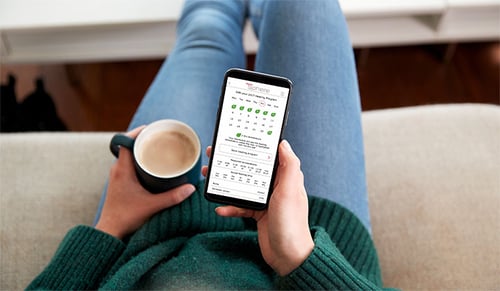
When running your electric underfloor heating system, it’s important you reduce the risk of overheating which can cause damage to the floor, especially soft floor finishes such as wood, carpet, and vinyl.
Over the years, we’ve seen several cases of where the floor finish has been damaged by overheating caused by thermal blocking. A tell-tale sign when this has occurred is when part of the floor finish has suffered from some sort of discoloration. For example, a darker patch has appeared on a vinyl floor. Thermal blocking occurs when airflow is restricted to the floor surface and the heat produced by the underfloor heating system can’t radiate upwards. This can be caused by flat-bottomed furniture, a box or even a bean bag being left on the floor for a long period of time.
If you do want a rug in the room, you can, if it has low thermal resistance such as a hessian rug. For other furniture such as sofas, we recommend using bun feet to allow for more airflow underneath.
No matter if you have questions about installing underfloor heating or need help running the system more efficiently, our team are on hand to help. Please contact us via the website or feel free to give one of the team a call on 0800 019 5899.
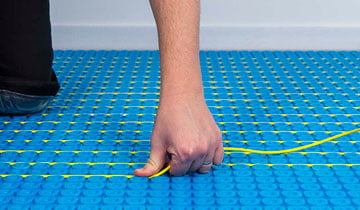
8 min read
If you are in the market for an electric underfloor heating system for your next home renovation, then you have landed in the perfect place. We’ve...
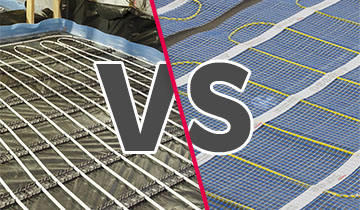
11 min read
In this heating blog article, we will be walking you through both water underfloor heating and electric underfloor heating to help you decide what...

5 min read
With the heating season just around the corner, and one of the busiest times of the year for any heating manufacturer, we thought it would be a good...